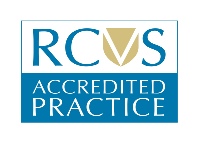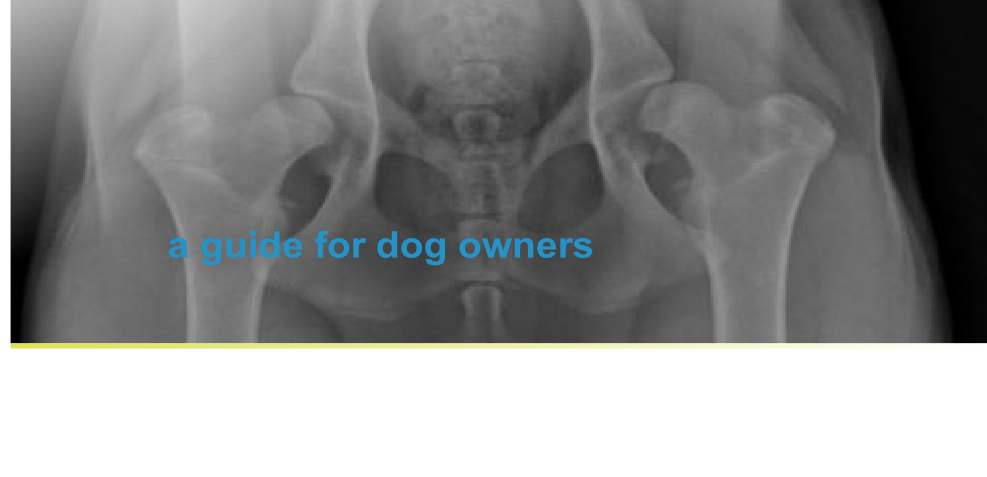


Contact Us
Greenmount Veterinary Clinic
72 Gilford Road,
Portadown, Co Armagh,
BT63 5EG
Tel: 028
38 358525/352640


028 38 352640

Website content owned and produced by Ewing Walker, Ewing may be contacted through Greenmount Veterinary Clinic or VetOrtho Referrals. Copyright © All rights reserved. Ewing Walker Greenmount Vets

Contact Us
Greenmount Veterinary Clinic
72 Gilford Road,
Portadown, Co Armagh,
BT63 5EG
Tel: 028
38 358525/352640



Hip dysplasia in Dogs
A guide for dog owners
By John Foster,
BVSc, CertVOphthal, MROVS
Reprinted from You & your Vet: BVA Animal Welfare Foundation for the British Veterinary Association
(Canine Health Schemes) 7 Mansfield Street London W1G 9NQ July 1996
Hip Dysplasia in Dogs
John Foster, BVSC, CertVOphthal, MRCVS
A look back to the modern dog's wolf-like ancestor which roamed the plains and forests millions of years ago shows how critical it was to be able to move freely and rapidly in search of prey. Nature was quite uncompromising. If enough food couldn't be caught or stolen due to an inability to run, jump, twist and turn then starvation would be the only alternative. When supper was provided by another this need for excellence declined, so being a bit slower and being a bit stiff on a leg didn't matter so much. The dog's association with man for more than 10,000 years may appear to have been to mutual
advantage but some debts wait to be paid; one of these debts concerns a condition called hip dysplasia.
Hip dysplasia (HD) is a term which encompasses a number of specific developmental and other abnormalities involving the hip joint. Developmental changes come first and being related mainly to growth are known as primary changes. Others come later; these are related to wear and tear from usage and are termed secondary changes. The end result is that one or a pair of joints becomes mechanically unsound and therefore does not function
properly An unsound joint is usually a painful one and lameness will result. In extreme cases the dog may find movement very difficult and much suffering will be involved.
It was in the light of these findings that the British Veterinary Association (BVA) and the Kennel Club (KC) developed a scheme some 30 years ago to assess the degree of hip malformation of dogs through radiography. Over this time almost 100,000 radiographs (X-rays) have been examined to provide a standardised pinion on HD status, principally for the use of breeders.
Currently 97 breeds are surveyed by the scheme in the UK.
STRUCTURE AND FUNCTION
The hip joints of land animals and even some birds are remarkably similar. The design has withstood the test of time and usage by countless species and is close to anatomic perfection. Where mobility, meaning athieticism, is needed the normal hip is an ideal way of enabling the transfer of power from the hind leg muscles to the body so that the creature is driven forward with strength and speed. The close relationship of the 'ball' to the 'socket' permits rapid changes of direction and the strength of the supporting structures of ligaments, tendons and muscles makes the hip a unit. Large joint surfaces of cartilage lubricated by joint fluid ensure smooth pain-free action. Little wonder, then, that any disturbance to this ideal circumstance has such dire consequences.
DEVELOPMENTAL DEMANDS
It is argued that dogs are not born with hips affected by dysplasia (unlike humans suffering from the disease). Hip modelling, otherwise termed development, can worsen with the passing of time, most particularly during the rapid growth phase between 14 and 26 weeks of age. Unwelcome changes in anatomic relationships within the joint start in early puppyhood with first usage and continue through into young adulthood. Wear and tear from exercise of the distorted joint is followed by varying amounts of
inflammation and degeneration resulting in remodelling change.
THE BVA / KC HIP DYSPLASIA SCHEME
All radiographs submitted to the BVA/KC Hip Dysplasia Scheme are assessed by means of scoring. The hip score is the sum of the points awarded for each of nine radiographic features of both hip joints. The lower the score the less the degree of hip dysplasia present. The minimum (best) score for each hip is zero and the maximum (worst) is 53, giving a range for the total of 0 to 106
The average score of the breed, or the 'breed mean score', is calculated from all the scores recorded for a given breed and is shown alongside its range thereby giving a representation of the overall hip status of the breed. All breeders wishing to try to control HD should breed only from animals with hip
scores well below the breed mean score. Sires (fathers) to be bred from should only be ones whose progeny (offspring) have achieved consistently low scores. The same selection procedure should be used for bitches for breeding, since the use of animals with higher than ideal scores may make the risk of producing offspring with high scores much greater. This circumstance is not only disappointing and potentially costly in terms of compromised breeding plans, but may lead to subsequent civil court
action.
For the hip scoring scheme to be meaningful and successful in the attempt to control this serious disease it is important that all radiographs taken under the scheme are submitted for scoring, whatever the apparent state of the hips, in order that the information gathered is as relevant as possible. It is only by this means that proper conclusions may be drawn by the scheme's statistitians, geneticists and veterinary advisers.
It is not hard to understand why things happen so quickly and how critical a whole series of factors in the dog's life are, when realising some animals treble their size and weight during a three- month period of adolescence. Getting all the many nutritional needs in the right quantity, to the right place and at the right time requires a mastery of logistics. However, it has to be realised that this apparent basic requirement overlays the parts played by inheritance and other factors, for example the type of exercise taken and the
degree of body weight.
SIGNS, APPEARANCE AND PATHOLOGY OF HIP DYSPLASIA
Hip dysplasia, because it can be made up of a picture of joint looseness, new bone formation or bone loss and inflammation and pain, can show up in a range of signs from apparent soundness through lameness to degrees of exercise intolerance. Combine these findings with the fact that some breeds and some individuals are more stoical than others and there is no predicting, just by looking from the outside, to what degree a particular dog has or hasn't got HD. More reliable is the clinical examination which is likely to reveal limitation of movement of the affected hip, probably reduction in muscle mass of the limb and some degree of pain. Remember, a dog with HD in the normal course of life does not show discomfort by, say, yelping, mainly because the pain is likely to be continuous as opposed to sudden and unexpected.
The only way to assess properly the presence or relative absence of HD is by radiography. This is an accurate photographic way of showing the position of the ball of the joint in relation to the socket and the presence and degree of any secondary changes.
CAUSES OF HIP DYSPLASIA
If HD was caused by a single factor then it would have been fully under stood and largely overcome by now. It is known that two factors determine whether HD is to occur and, if so, how bad it will be - inheritance and what is termed 'environment'. The former relates to the genetic code passed to the offspring by both parents and the latter to all the outside influences which alter and mould the growth and functions of the bones, cartilage, ligaments, tendons and muscles of the body In simplistic terms the genetic code is rather like the architect's building blue prints and, the environment, the builders and their materials. In HD the architect gets things wrong to a greater or lesser extent but the builders have the greater influence on how things look and function in the final analysis.
TREATMENT OF HIP DYSPLASIA
Alleviating some or most of the signs of pain and limitation of movement caused by HD is made possible due to sophisticated medicines and surgery.
See section on hip dysplasia and TPO
More useful information of BVA hip scoring may be found at http://www.bva.co.uk/canine_health_schemes/Hip_Scheme.aspx
http://www.bva.co.uk/public/documents/chs_hip.pdf


Website content owned and produced by Ewing Walker, Ewing may be contacted through Greenmount Veterinary Clinic or VetOrtho Referrals. Copyright © All rights reserved. Ewing Walker Greenmount Vets
| pet grooming |
| fleas & ticks |
| pet microchip |
| pet insurance |
| pet worming |
| pet neutering |
| vaccinations |
| dogs trust scheme |
| dog neuter for £15 |
| rabbits |
| cats |
| dogs |
| dental treatments |
| spinal xray myelogram |
| GSDA A stamp |
| elbow score |
| hip score |
| hip score guide for owners |
| our healthy pet offers |
| vetortho.co.uk |
| Fracture Surgery |
| Cruciate Surgery TTA TPLO |
| Hip Dysplasia |
| Spinal Surgery |
| Elbow Dysplasia |
| Cardiology services offered |
| Doppler heart scan |
| Blood pressure monitoring |
| Electrocardiogram ECG |
| Holter monitoring |
| Bronchoscopy & Endoscopy |
| ophthalmology referrals |
| cataract surgery |
| eye-vet |